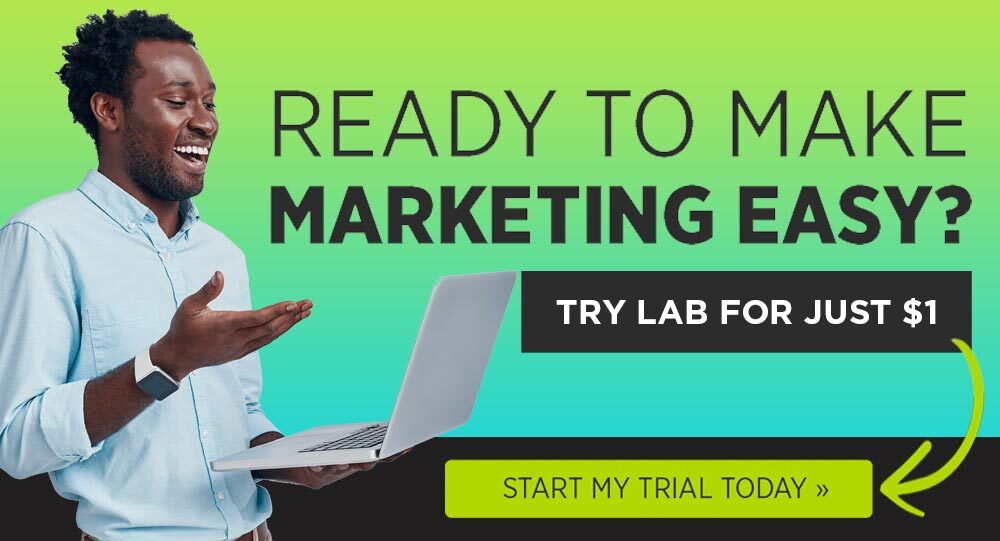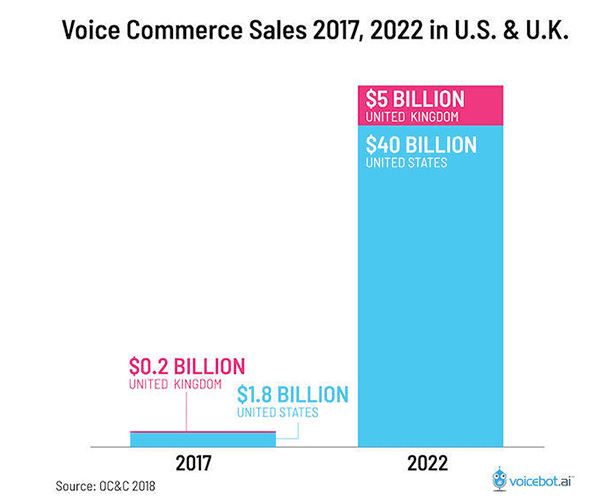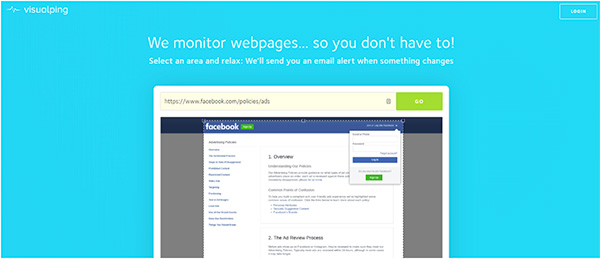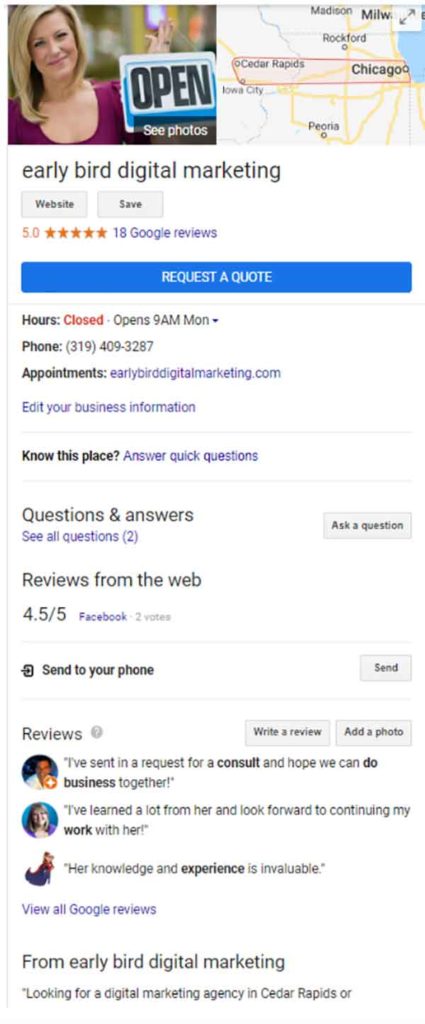Digital marketing is no stranger to changes.
We have to stay on our toes if we want to stay relevant with the never ending changes to algorithms and regulations—and part of that is positioning ourselves for success.
What is digital marketing going to look like in 2020?
We had had 17 digital marketers weigh in to let us know what they see on the horizon, so we can all plan accordingly and have a great year of engagement, clicks, and conversions.
Here are 17 predictions for digital marketing in 2020.
Benton Crane, CEO of Harmon Brothers

Ad platforms (looking at you Facebook) will continue to emphasize shorter content (of course, they want to sell more impressions). Short-form, however, limits your ability to build your brand character, voice, and universe.
We predict the winning strategy will be to play marketing chess, not checkers. In chess your pieces have different strengths and weaknesses, whereas all checkers pieces are the same. When you build your marketing strategy use a mix of short, medium, and long-form content. Use the short-form content to appease Facebook’s algorithms, but don’t stop building your brand character, voice, and universe with longer-form content.
Logan Fletcher, Content Marketing Manager

If you aren’t posting videos on social media, 2020 NEEDS to be the year you start, otherwise, you’ll get left behind.
Beyond that, we foresee an increased presence of companies on social media, as they try to create a strategy that will help them get an edge on competitors. Video on social platforms is going to continue to be at the fore-front of successful strategies.
Not only are B2B companies going to focus on creating video for LinkedIn, but they will also start to take notice of IGTV. With updates to Instagram’s algorithm, video posted on IGTV will go to the top of your followers’ feeds, as well as be found more prevalently on users’ explore pages. This is going to lead to more video leads, a larger audience, and more benefits.
What else will we see in 2020? We think that marketers will start focusing more on client needs, instead of “marketing needs.” Marketers will start answering customers’ questions directly and create campaigns that answer these questions. The only people that really matter are the people that we want using our product or service. Refocusing what is delivered to clients will be a trend in 2020 that many companies won’t be able to ignore.
Michelle Barnum Smith, AMZ Messenger Bot Club

The Amazon marketplace is constantly in flux. There are more private label sellers now than ever and the marketplace will become even more competitive. To stay in the game, sellers have to be resilient and adaptable.
One of the most important ways to adapt is to have a brand-mindset. A brand isn’t just about showing up with a single product—it’s about building a community of passionate buyers. The easiest and best way to start is with driving your own external traffic using Chat Marketing strategies through ManyChat.
ManyChat makes chat marketing an omni-channel experience. Now sellers can run multichannel campaigns thru one tool and reach their audience in the most efficient ways possible. Chat marketing will definitely make audience building, product launching, and product promotion seamless for Amazon Sellers.
Tara Robertson, Director of Customer Marketing at Sprout Social

2020 is all about refinement. Brands not only need to focus on who they are but more importantly, how they differ from competitors and create remarkable experiences for their customers. In the year ahead, marketers will focus more on being customer obsessed by ensuring every touchpoint is consistent and deliberate. Providing exceptional customer experiences is no longer a “nice to have,” but an expectation—especially as businesses strive to stand out in their saturated markets.
To that end, there will be a greater need for content and experiences that favors quality over quantity. We are living in the age of authentic marketing and the more relevant and relatable your marketing is, the more loyal your audience will become. It’s not just about the new platform, advanced AI, or a robust tech stack. In fact, I actually think it will be the opposite.
We need to spend less time thinking about our automation and more time thinking about how we can connect with our customers and each other. We expect more personalization than ever as consumers and it’s critical that marketing and sales teams understand this and the importance of connection.
Jenna Snavely, Production Content Manager at DigitalMarketer

As host of The DigitalMarketer Podcast, I talk to a lot of experts in the industry. From all my podcast interviews over the least year, the market trends we’ve been watching closely at DM, and my own buying behavior—I think the best way to catch back up in 2020 (or keep your lead) will be serialized consumable video content.
It’s a huge opportunity to define your brand voice and build an audience, and most importantly…it’s a way to over-deliver.
Brands that do the hard work, get the payout.
Nathalie Lussier, Founder of AccessAlly

Less TV Ad Spend, More Online Campaigns
In 2020, I predict that more people will continue to “cut the cord” from cable and move to streaming options for their entertainment. It’s estimated that 45 million adults will leave their cable or satellite providers in 2020.
What does that have to do with digital marketing?
It means that as attention shifts away from traditional TV advertising, more advertisers will need to get creative and find ways to reach people online instead.
That is both a blessing and a curse: it’s going to create more work for digital agencies, but it’s going to raise the cost of advertising on the hottest platforms like Facebook, YouTube, and Google.
Brands might not be shifting all of their dollars to “pay per click” advertising, they might also up their content marketing budgets in an effort to appear in social shares and conversations, too! Content marketing agencies, take note!
Splintering Community Platforms
For businesses who want to grow their communities online (and who doesn’t?) there’s an intensifying need to take ownership of community space.
For many years the best place to host a community has been through Facebook groups. There’s a lot of engagement and growth on Facebook, because of an already a built-in habit (or is it an addiction?!).
However, the tech giant has experienced some political and ethical backlash and more digital business owners are looking for alternatives.
I predict that platforms that allow you to create community “on your own turf” like Palapa, Mighty Networks, BuddyBoss, and WordPress are going to see a lot of growth.
However, as much as I see people building these networks outside of the Facebook ecosystem, those that have tried and failed say the the vortex is strong… and engagement isn’t as high.
So there will likely be a splintering of communities across different platforms, and I suspect also a consolidation for those groups that don’t get enough traction off Facebook when they return.
Intensifying Polarization & Woke Marketing
As the planet’s climate continues to heat up, so will the political polarization in 2020.
Brands will have a choice to make: stay neutral or have a point of view.
The companies that stay above the fray will avoid the drama and the volatility that comes with entering the conversation on everyone’s mind.
But those businesses that are able to sincerely share their perspective, will gain long term loyalty for being willing to put their values over short term profits. According to Cone Communications, 92% of consumers say they have a more positive image of a company when the company supports a social or environmental issue.
Yes, there will be fall out from companies that engage in “woke marketing” and mix activism or politics into their message.
My prediction is that more businesses will be willing to put their reputations on the line to connect with Gen Z and Millennials who are more discerning about where they spend their hard earned dollars… and how it impacts the world at large.
Rachel Pedersen, CEO of The Viral Touch & Social Media United

2020 is the year the facade of perfectly polished marketing crashes and burns. Too many people have been burned by influencers faking it with perfect photoshoots, and consumers are desperate for authenticity.
As consumers get hungry for REAL answers, they will be looking for context outside of keynotes. They’re looking for signs of congruency – proof that their favorite people on platforms are actually walking the walk.
In 2020 the marketer who provides all-access, behind the scenes, contextual marketing wins. It’s the year of humanized marketing.
Here is how to beat the bandwagon marketers in 2020:
- Tik. Tok: The clock is ticking. TikTok is a rare platform that shows more dimensions and allows audiences to fall in love with your creative, unpolished, impromptu, or UCG content.
- Go live. Anywhere. Showcase the chaos of getting ready for an event with 3 kids when your baby has the flu and your last clean outfit was *cough* messed up.
- Record your podcast in real life scenarios. Allow your audience to FEEL your life and surroundings through the audio.
- Drop Photoshop. So you have a scar on your eyebrow? The holiday eating magically added an extra 15 pounds on your photos? Let it be. Let them see.
- Video tells all. Consumers are looking for contextual clues in your video marketing. They want more than a perfect set and script. They want to see who you are. Give them more to work with.
- Tell the truth. So 2019 was a hard year? Tell them. And don’t just brush it off with the usual ‘Oh man, it was a challenging year!’ Tell them what went wrong. Tell them how your heart broke. Tell them about the night when you almost quit. Tell them about the mistakes that nearly destroyed you. Just tell them the truth.
Jody Milward, Founder of Social Charlie

A game changer for Coaches and Digital course creators going into 2020 will be to include a Self Liquidating Offer (SLO) at the front end of their Facebook Advertising. Over the years coaches have been told to drop the low ticket offers and focus entirely on High ticket sales, because with the rising costs of Facebook ads, these offers weren’t profitable.
But that’s EXACTLY why they need to be part of product suite in 2020. We’re seeing people making 6 figures in under a year with a $27 offer. For example, Allie Bjerk, runs Facebook ads to cold traffic for her SLO with a $27 offer. This has generated nearly $500,000 in 9 months with an overall 2.4 x ROAS. So not only is she generating leads and covering her ad spend, she’s also making money. Then when she promoted her high ticket offer she had a quality audience of buyers and of the people who joined, 70% had purchased her $27 offer.
Then there’s Ashley who has an SLO for Freelance writers and is covering her ad spend as she grows her email list. By having people come into her community via a paid offer she’s seeing significant growth in her Facebook Group with a lively, engaged community and her SLO was a major contributor to the success of her five figure program launch.
A great SLO can not only cover your ad spend but also make you money while bringing in a quality audience of buyers, rather than loads of tyre kicking cheap leads who never even go and open your emails. When the intitial front end offer is combined in a sales funnel with complementary upsells, we’re seeing what starts with a $27 offer actually have an average order value of $61 and an average cost per sale of $33.
So rather than pouring money into free lead magnets and filling up your CRM with cheap unqualified leads, turning that lead magnet into an excellent low ticket offer to bring in quality customers who are actually paying to get on your email list, will make a massive difference to your Facebook Ad Budget and business in 2020.
(NOTE: Need a helping hand with your digital marketing efforts? Or maybe you just want proven, actionable marketing tools, tactics, and templates to implement in your business? Check out the latest deal from DigitalMarketer, and you will be on your way to helping your business grow.)

Ash Roy, CEO and Founder of Productive Insights

We’re going to see 2 major audio trends in 2020
#1: The first prediction is the continued rise of Podcasting as a content platform and its mainstream adoption Podcasting has (finally) gone mainstream and will continue its exponential growth.
First, let me explain what’s driving this massive growth in podcasting.
Podcasting is predominantly an audio platform (although there are video podcasts). Audiences are feeling increasingly overwhelmed by the multiple screens bombarding them with information every minute of every day, and quite frankly, the screen has become a source of overwhelm.
The audio medium is relatively untouched and doesn’t represent as much anxiety to most audiences…yet. Podcasting, therefore, presents a great way to gain cut through to prospective buyers and facilitates deeper engagement. Eighty percent of listeners listen to all or most of each podcast episode and they listen to an average of 7 shows per week!

In today’s hyper distracted world, that’s off the charts!
Podcast listeners are loyal, affluent and educated. There’s a correlation between affluence and time poverty and these affluent people tend to self educate in pockets of what they consider ‘dead time’. e.g. while commuting to work, while at the gym etc.
The rise of voice-based search (more on this later) and products such as car play are driving a greater number of people to search for their favorite podcasts using voice-activated search. With the rise of smart speakers, we’re seeing lower friction to access relevant information via podcasts.
Podcasting listenership has grown from 10% of the US population to almost 35% of the US population in 2019.

Techcrunch believes the increase in celebrity podcasters is also boosting listenership. I see this trend continuing in 2020.
#2: The second prediction is that over 50% of searches will be voice-based and voice search is set to grow exponentially going forward according to Quora Creative we’re going to see at least 50% of online searches happen using voice.
This means that your content will need to be optimized for voice search in 2020 if you want to be found by 50% of those searches.
How do you make yourself easier to be found? Your content needs to be far more conversational. For instance rather than optimizing for the words “SEO audit” you need to optimize for “Hey Google, what is SEO audit?”
Here are some tips to be more voice-search friendly in terms of your content:
- Write content in a more conversational tone
- Focus less on keywords
- Focus more on semantic search
- Try to work on user intent
- Provide an answer in a context
- User longer tail keyword phrases
- Try to be concise where possible
Given Apple’s track record of building complementary offerings across it’s devices (such as handoff) I don’t think it’s inconceivable for Apple to come out with search capabilities that allow you to search your computer using your HomePod or your iPhone or your Apple watch as the ‘voice search input tool’ that then displays results on your larger screen like your TV or your computer.
This is something I’d like to see and it’s quite possible in the near future. Apple clearly appears to have the capability to deliver this.
Voice search is in its infancy right now, just like the internet was in the 90s. We ain’t seen nothin’ yet.
We’re also likely to see an explosion in voice commerce in the coming years. According to this article on Wordstream, the US is set to see a rise in voice commerce sales from $1.8b to $40b by 2022

Neil Flinchbaugh, Founder & Digital Copywriter of NWF Digital Copywriting

Copywriters are going to have to up their game on Facebook in 2020.
Here’s the thing: Facebook rocks. The ability to reach an audience that’s massive AND targeted, with native-feeling content, makes it a tremendous ad platform.
But it’s getting more competitive. And on top of that, Facebook’s inventory is more limited than some other ad platforms (GDN and YouTube, for example, have ad placements galore), which means that as Facebook ads become more mainstream…they also become more expensive.
That’s why, if your Facebook ads are going to succeed in 2020 and beyond, they’ll have to do an even better job of grabbing your prospects’ attention and delivering an effective sales message.
So how do you do that?
Let’s start with what you should NOT do. You should NOT use misleading copy—clickbait headlines, sensational claims, and so on—to trick or manipulate people into clicking your ad. Facebook is constantly updating and expanding their ad policies to prohibit this kind of thing, and if you ignore those policies, it’s going to get you in trouble sooner or later.
Instead, get back to these 3 rock-solid basics of good conversion copywriting:
1) Enter the conversation taking place in the prospect’s head.
It’s a copywriting cliché, yes, but that’s because it works.
In a Facebook ad, you’ve got only a few seconds to make people stop scrolling and pay attention. To maximize your chances of success, use that time to talk about something your prospect cares about. Now what you think they should care about—what they ALREAY care about.
This means you’ll have to know your avatars inside and out. You may need to send out surveys, do some review mining, perform competitive analyses, and even—gasp—talk to your customers in person. (Or over the phone.)
One trick I use, whenever I’m working with a new company, is to call up their customer service department. Customer service reps know exactly what questions and objections people are voicing regularly, making them a great source of valuable customer information.
2) Tell a good story.
We humans are wired for story. It’s in our DNA. So when you work stories into your copy, you’ll be tapping into our primal human instinct and making us want to know more.
And as a side-effect, your copy will feel less “salesy” and more authentic.
Bonus!
3) Use open loops to create reader momentum and compel the user to click.
Have you ever watched a TV show where the hero faces sudden danger—maybe she’s hanging on the edge of a cliff with one hand—and then, right at that moment of high drama, the show cuts to a commercial?
Don’t you hate that?!
Well, that’s no accident. TV shows place these cliffhangers right before the commercial break because they want to make sure you’ll sit through the next few minutes of Old Spice and Tide ads to find out what happens next.
So resist the urge to tie up your ad copy in a neat little bow. Instead, leave a little bit of mystery at the end—so that your users will have to click the ad to satisfy their curiosity.
So there you go, guys: 3 tips that I use to craft high-converting Facebook ad copy. Keep these in mind when writing your ads, and you’ll be putting yourself in a position to succeed on Facebook in 2020 and beyond.
Josh Turner, Founder & CEO of LinkedSelling

A New Approach to ‘Funnels’ will reign supreme.
The concept of a sales or marketing funnel has become ubiquitous these days. Most buyers or prospects even know when they are ‘in a funnel’.
The idea of a funnel has been around forever but now every small business owner is focused on setting up their funnel due to a handful of very successful software and training programs to come out in the past decade.
But this widespread adoption has led to some pretty cookie cutter approaches to prospect engagement, content, emails and more.
An automated funnel has led to a lot of new practitioners to overlook the basic concept of needing to first build TRUST with their prospects if they ever plan on making a sale.
Prospects don’t want to be ‘in a funnel.’
They don’t want an automated reply.
They want something that feels like a personal experience.
Something that is different from what most are doing.
We foresee a shift in the approach to the most successful ‘funnels’ being those that put a higher priority on building a unique, different outreach approach that feels personal to their prospects.
Eva Gutierrez, Freelance Content Writer

In 2020 qualitative content is going to beat quantitative content.
Instagram is testing out hiding likes which pushes the idea that one day, likes, comments, and shares might be irrelevant. What will be relevant is the quality of your content.
- Did your article on marketing actually have actionable advice that changed the reader’s marketing strategy for the better?
- Will your Instagram post make somebody change one of their most deeply routed habits?
- Was your last podcast episode the reason your customer decided that today was the day they would change their business strategy?
Or,
- Did a clickbait headline garner a lot of views and a huge bounce rate?
- Will buying 50,000 fake Instagram followers boost your follower count and drastically decrease your post’s visibility in the algorithm?
- Was double counting subscribers from both iTunes and Spotify as good for sponsorship opportunities as it was for losing the trust of your audience?
Qualitative content that actually answers your customer’s problems and inspires them to make a change that involves your business is what will beat out the clickbait headlines, the fake followers, and the inflated engagement metrics.
And that’s what consumers will care about in 2020.
Ralph Burns, Founder of Tier 11

Have you ever been in this situation?
If you’ve been keeping up-to-date with Facebook’s policy changes—and if you’re running ads on Facebook, you absolutely SHOULD be—then you already know that Facebook has been adding a lot of new restrictions lately.
For example, Facebook has officially created policies prohibiting the use of…
- Engagement bait that urges people to inauthentically engage with an ad (“LIKE this or LOVE this if you love puppies”).
- Exaggerated copy that commands an action (“All jazz fans must check this out”) or supposes a reaction (“These diets will blow your mind”).
- Landing pages with minimal content and a majority of unrelated or low-quality ads.
And guess what?
You can expect a LOT more Facebook policy changes and advertising restrictions in 2020.
There are a number of reasons for this:
- Facebook knows they’re being scrutinized. They also know that privacy is a big issue today. So they will continue to disapprove ads that make people think their privacy is being violated.
- Facebook has had more time to build out their ad platform’s infrastructure. As they build more systems and hire more employees, they have more resources at their disposal to dedicate to improving their ad review process.
- Last but not least, Facebook wants to protect their platform. They know that if people start having a negative experience on Facebook, they’ll stop using it. So they’ll continue to ban ads that use underhanded tactics.
Now there are two ways to take this news.
You could see it as a negative, and try to find ways to “game the system.” This approach could work…a little bit…maybe…in the short term…but over time, it’s just going to hurt your ad account and your Facebook advertising results.
Or you could take this news as a positive thing. Realize that Facebook isn’t just restricting what you’re allowed to do…they’re telling you what’s most likely to WORK on their platform!
At the end of the day, Facebook wants you to succeed. They want advertisers like you to get good results, because then you’ll spend more and more money advertising on Facebook.
So none of these changes are meant to hurt you. They’re meant to help.
With that in mind, here’s what we recommend you should do:
Bookmark Facebook’s Advertising Policies page, and read it often.
It’s updated frequently, and like I said, that will only increase in 2020.
Pro tip: you can use a tool like visualping.io to email you anytime there’s a change made to this page. All you have to do is tell it what URL you want to monitor:

Then enter your email, and it will automatically let you know when that page gets updated:

And last but not least, make sure your ads actually FOLLOW these policies!
Not only will you avoid disapproved ads and potential account shutdown, you’ll also get better results on Facebook because you’ll be giving people a more positive experience with your brand and creating ads that work WITH the algorithm (not against it).
Mike Rhodes, CEO of WebSavvy

There are a LOT of smart people on this blog with predictions on a wide range of subjects, so I’ll keep mine focused on the Google Ads side of things.
In 2020 we’re going to see a lot more about:
Forced Automation
Google started playing with Machine Learning in 2011. They spent $400m buying DeepMind 5 years ago & they’re not going to backtrack now – so expect more Machine Learning coming to Google Ads in 2020. The plus side of this: the Machine will remove the need for some of the repetitive tasks that you currently do, it will use its enormous data & knowledge about all of us to serve ever more targeted ads. The down side? This means less control for you & having to trust a machine that doesn’t always get things right.
What can you do? The game in 2020 will be to know where the Machine is strong & also where it’s weak. How can you complement this. And in particular, how can you monitor the Machine to know when the automation is working & should continue, or when it’s not & you need to find a workaround. Brush up on your Scripts & use tools like Data Studio to visualise the data you need to inform your decision making.
The future of advertising (& all work) is smart people working with smart machines. So work out (quickly) where you can add the most value.
Data/Tracking
Apple & the ad platforms are at war about tracking & in particular 3rd-party cookies that track behaviour on websites. This can only escalate & it’s possible we’ll see new tracking methods rise to the fore in 2020.
And yet the quality of the data you capture will be one of the major differentiating factors that separate the good from the great agencies (& businesses) in 2020. Data is the lifeblood of Machine Learning. All businesses must get better at using the data they have & working out what additional data they use to make better business decisions.
What can you do? Start using the tracking IDs that Google & Facebook offer (just research GCLID & FBCLID). Start by passing these long strings of gobbledygook into your CRM systems. Once you’ve cracked that, start working out how to analyse the data & discover which leads turn into actual sales. Or which clicks generate the best LTV.
Targeting
The death of keywords has been exaggerated. They’re not going anywhere. Yet. However as the ability to target precisely continues to be eroded (exact & phrase match aren’t that exact any more!) we may find an email from Google one day in the future that does away with Match Types & only allows broad match keywords. Idiotic? Who knows. But it could happen.
Audience targeting continues to get more powerful as well. Google recently announced Combined Audiences which will have marketers frothing at the mouth. We love additional power.
But as always expect to lose some control as these new features roll out.
What can you do? Get good at using audiences with your search campaigns in addition to keyword targeting. Layer these on top of every search & shopping campaign and prepare for the day when it’s the only targeting option available!
Messaging
Search Ads continue to contain more characters, pushing organic results further down the page & making great copy all the more important. It’s no longer enough to stuff the keywords in the ad & hope for the best.
A/B testing is dead too. It’s not about finding the ‘perfect ad’ any more & testing until you get it. But instead the Machine wants to create the best ad for each user on the fly, based on everything it knows about that person (& it knows a LOT!)
Google’s answer is the Responsive Search Ad (there’s a Display version too). Your job is to write the ‘assets’; up to 15 headlines & up to 4 descriptions that the Machine will mix’n’match in real-time to craft what it believes is the best ad. So get good at persuasive copy!
Reporting for these continues to suck (despite promises from Google for 18 months) so again expect to lose control & have to trust in the Machine.
What can you do?
Add an RSA to all high volume ad groups in your Search campaigns & test. Monitor the performance of not just the click thru rate (CTR%) but importantly the profitability of these dads (conversion rate, cost per conversion & profit per conversion).
Again we may find ourselves in a future where these are the only type of ad allowable, so start testing now & get great at using them before you have to.
Cross Channel
Lastly, I implore you to improve your knowledge of other platforms & how they play together.
Businesses are getting more savvy & want to know about attribution & incremental cost/revenue. Finding the answers to these hard questions is often near-impossible, but with a good Analytics setup (see Chris Mercer) you can at least get directional data & start making informed decisions instead of pure guesswork!
The digital marketing landscape will continue to change – probably faster every year. You can view this as an impossible mountain to climb, or as a huge opportunity for your agency or personal brand.
Sherry Bonelli, Owner of Early Bird Digital Marketing

In 2020, your Google My Business profile will replace your home page. When people do a search for a local business, at the top of search results they will typically see the “Local 3-Pack” above organic search results:

Since most searchers tend to trust the results that rank higher in search results, the businesses in the top results generally get clicked on more frequently. That means businesses in the Local 3-Pack have prime spots and get more clicks.
Additionally, according to a recent study by BrightLocal, 49% of businesses receive more than 1,000 Google My Business Views on search per month. That’s a lot of eyeballs!
With a Google My Business profile, searchers can get a ton of information about your business directly on Google – they don’t even need to go to your website:

With a properly optimized GMB profile, your potential customers can see everything from your address, phone number, business hours, photos, reviews, business description, a list of products/services, people can ask you questions – and you should answer them — and more!

Depending on your type of business, other features may be available to you. For instance, people can even book an appointment with your company directly from Google.

With all of your company’s information available right from Google’s search engine, people will be able to make much of their purchasing decisions at that exact moment – often without even having to visit your website for more information. Your website will become more of a secondary resource after a searcher has already looked at your information on your Google My Business profile.
It looks like 2020 is going to quite the year.
Which one of these strategies best suits your business goals in 2020?
Stick around the DM blog to see what we choose to execute on and how we use it to market our products, memberships, and live events.
(NOTE: Need a helping hand with your digital marketing efforts? Or maybe you just want proven, actionable marketing tools, tactics, and templates to implement in your business? Check out the latest deal from DigitalMarketer, and you will be on your way to helping your business grow.)

The post How Digital Marketing Will Change: 17 Predictions for 2020 appeared first on DigitalMarketer.
from DigitalMarketer https://ift.tt/2ZBZbSz
via IFTTT
Comments
Post a Comment